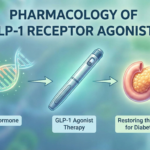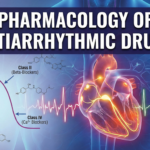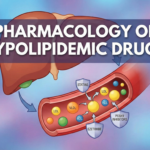Understanding the action of drugs on the autonomic nervous system (ANS) can be simplified by drawing a comparison with the adrenaline/epinephrine-induced fight, flight, and fright response. This response, also known as the acute stress response, is the body’s physiological reaction to perceived harmful events, attacks, or threats to survival. To better comprehend the role of various drugs acting on the ANS, we’ll break down the two main divisions of the system and compare their functions to adrenaline’s effects.
The Sympathetic Nervous System (SNS) – Fight or Flight
The sympathetic nervous system is responsible for the fight or flight response, which prepares the body to react to potentially dangerous situations. When the SNS is activated, it triggers the release of adrenaline (epinephrine) and norepinephrine (noradrenaline), which act on various target organs to produce a series of physiological changes, including:
- Increased heart rate and blood pressure
- Dilated pupils
- Increased blood flow to muscles
- Enhanced mental alertness
- Increased metabolism

Drugs that mimic or amplify the effects of adrenaline/epinephrine in the SNS are known as sympathomimetics or adrenergic agonists. These drugs can be used to treat various conditions, such as asthma, nasal congestion, etc. Examples include epinephrine, norepinephrine, and pseudoephedrine.
| Classification of Sympathomimetics | Mechanism of Action | Examples |
|---|---|---|
| Direct-acting adrenergic agonists | These drugs bind directly to adrenergic receptors and activate the sympathetic nervous system. | Adrenaline/Epinephrine, Norepinephrine, Dopamine, Phenylephrine, Albuterol |
| Indirect-acting adrenergic agonists | These drugs enhance the release and/or inhibit the reuptake of norepinephrine and dopamine, leading to increased activation of the sympathetic nervous system. | Amphetamines, Cocaine |
| Mixed-acting adrenergic agonists | These drugs have both direct and indirect effects on adrenergic receptors, leading to increased activation of the sympathetic nervous system. | Ephedrine, Pseudoephedrine, Methamphetamine |
| Alpha-adrenergic agonists | These drugs selectively activate alpha-adrenergic receptors, leading to vasoconstriction and increased blood pressure. | Phenylephrine, Clonidine |
| Beta-adrenergic agonists | These drugs selectively activate beta-adrenergic receptors, leading to bronchodilation, increased heart rate, and increased contractility. | Albuterol, Dobutamine |
Conversely, drugs that inhibit or block the effects of adrenaline are known as sympatholytics or adrenergic antagonists. These drugs are used to treat conditions like hypertension, arrhythmias, anxiety, migraine headaches, etc. Examples include propranolol, metoprolol, and atenolol.
| Classification of Sympatholytics | Mechanism of Action | Examples |
|---|---|---|
| Alpha-adrenergic blockers | These drugs block alpha-adrenergic receptors, leading to vasodilation and decreased blood pressure. | Prazosin, Doxazosin, Terazosin |
| Beta-adrenergic blockers | These drugs block beta-adrenergic receptors, leading to decreased heart rate, decreased contractility, and decreased blood pressure. | Propranolol, Atenolol, Metoprolol |
| Alpha-beta-adrenergic blockers | These drugs block both alpha- and beta-adrenergic receptors, leading to vasodilation, decreased heart rate, decreased contractility, and decreased blood pressure. | Carvedilol, Labetalol |
| Centrally-acting alpha-adrenergic agonists | These drugs stimulate alpha2-adrenergic receptors in the brain, leading to decreased sympathetic outflow and decreased blood pressure. | Clonidine, Methyldopa |
| Ganglionic blockers | These drugs block the transmission of signals between sympathetic and parasympathetic ganglia, leading to decreased sympathetic activity and decreased blood pressure. | Hexamethonium, Mecamylamine |
The Parasympathetic Nervous System (PNS) – Rest and Digest
The parasympathetic nervous system works to counter the effects of the SNS and is responsible for the body’s “rest and digest”. This division of the ANS helps to conserve energy, slow down heart rate, and promote digestion and relaxation. When the PNS is activated, it releases neurotransmitters like acetylcholine (ACh) to elicit the following effects:
- Decreased heart rate and blood pressure
- Constricted pupils
- Increased salivation and digestion
- Stimulation of the urinary and digestive systems
Drugs that mimic or enhance the effects of acetylcholine in the PNS are called parasympathomimetics or cholinergic agonists. These drugs are used to treat conditions such as glaucoma, myasthenia gravis, curare poisoning, etc. Examples include pilocarpine, physostigmine, neostigmine, bethanechol, and donepezil.
| Classification of Parasympathomimetics | Mechanism of Action | Examples |
|---|---|---|
| Direct-acting cholinomimetics | These drugs bind directly to muscarinic and/or nicotinic receptors and activate the parasympathetic nervous system. | Pilocarpine, Bethanechol, Methacholine, Nicotine |
| Indirect-acting cholinomimetics | These drugs inhibit the activity of acetylcholinesterase (AChE), which is the enzyme responsible for breaking down acetylcholine in the synapse. This leads to an increase in acetylcholine levels and activation of the parasympathetic nervous system. | Physostigmine, Neostigmine, Donepezil, Galantamine, Rivastigmine |
| Cholinesterase reactivators | These drugs reactivate cholinesterase enzymes that have been inhibited by toxins, such as organophosphate poisoning. By reactivating the enzymes, excess acetylcholine can be broken down and the toxic effects can be reversed. | Pralidoxime, Obidoxime, HI-6 |
On the other hand, drugs that inhibit or block the effects of acetylcholine are known as parasympatholytics or cholinergic antagonists. These drugs are used to treat various conditions like irritable bowel syndrome, organophosphate poisoning, overactive bladder, motion sickness, etc. Examples include atropine, scopolamine, and oxybutynin.
| Classification of Parasympatholytics | Mechanism of Action | Examples |
|---|---|---|
| Antimuscarinic agents | These drugs block muscarinic receptors and inhibit the parasympathetic nervous system. | Atropine, Scopolamine, Ipratropium, Tiotropium |
| Ganglionic blockers | These drugs block the transmission of signals between sympathetic and parasympathetic ganglia, leading to decreased parasympathetic activity. | Trimethaphan, Mecamylamine |
| Neuromuscular blocking agents | These drugs block the transmission of signals between nerves and muscles, leading to muscle paralysis. | Rocuronium, Vecuronium, Pancuronium |
Comparisons
Parasympathetic/cholinergic agonists Versus Sympathetic/sympathomimetic agonists

Parasympathetic blockers/cholinergic antagonists Versus Sympathetic blockers/sympatholytics/adrenergic antagonists

Parasympathetic/cholinergic agonists Versus Sympathetic blockers/sympatholytics/adrenergic antagonists

Sympathetic agonists/sympathomimetics/adrenergic agonists Versus Parasympatholytics/Cholinergic antagonists

📚 AI Pharma Quiz Generator
🎉 Quiz Results
Medical Disclaimer
The medical information on this post is for general educational purposes only and is provided by Pharmacology Mentor. While we strive to keep content current and accurate, Pharmacology Mentor makes no representations or warranties, express or implied, regarding the completeness, accuracy, reliability, suitability, or availability of the post, the website, or any information, products, services, or related graphics for any purpose. This content is not a substitute for professional medical advice, diagnosis, or treatment; always seek the advice of your physician or other qualified health provider with any questions you may have regarding a medical condition and never disregard or delay seeking professional advice because of something you have read here. Reliance on any information provided is solely at your own risk.









